Waterkeepers Around the World Battle Climate Change
By: Waterkeeper Alliance
The recent reports that the level of carbon dioxide in the earth’s atmosphere has passed 400 parts per million, the highest in more than 300 million years, has taken many people by surprise. But the women and men of the world’s more than 270 Waterkeeper organizations were not among them. Waterkeepers in North America, Latin America, Europe, Africa, Asia and Australia are on the front lines of the global environmental crisis, leading the fight against misguided and destructive fossil- fuel projects that are the chief culprits in the dangerously increasing concentrations of carbon dioxide in the atmosphere . These challenges exist everywhere, in various ecosystems, and the impacts of climate change are devastating in many places. Here are some of the most compelling eyewitness accounts from Waterkeepers on six continents.
ASIA
AFRICA
AUSTRALIA
CARIBBEAN
NORTH AMERICA
SOUTH AMERICA
EUROPE
ASIA
Buriganga Riverkeeper, Bangladesh: The Effects of Climate Migration in Dhaka
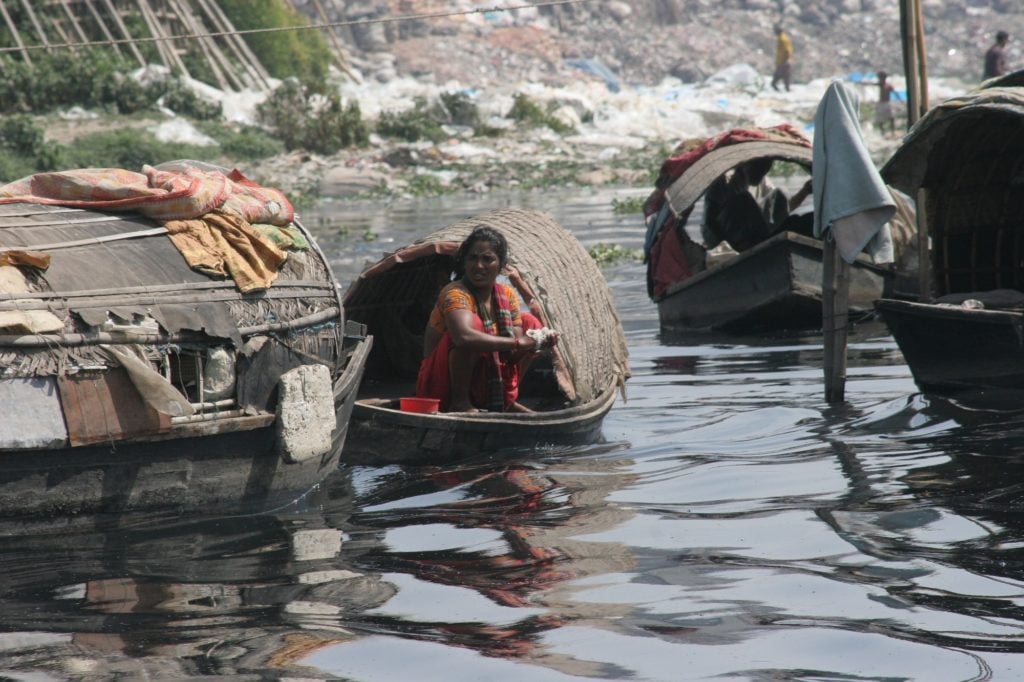
By the end of the century, 15 million people are expected to be landless and displaced as a result of climate change in Bangladesh, which is only 20 feet above sea level. Each year some 500,000 people come to Dhaka, migrating from their homes and livelihoods because of frequent floods, extreme droughts and catastrophic storms that destroy fields of rice and other crops that have sustained their villages for generations. In a city with an estimated population of 3.5 million, 40 percent of the people in Dhaka live in the slums, which are rapidly expanding along the banks of the Buriganga River, and a great number of climate refugees are now living on the river itself.
“The water in the Buriganga is like poison. Every day untreated waste from more than 200 tannery operations along the Buriganga are discharged into the river, along with untreated medical waste and waste from textile factories. There is no dissolved oxygen during winter. No aquatic life. More numerous floods and storms are also contributing to the river being turned into a huge drain. People are getting many kinds of diseases and dying because of their dependence on the river’s polluted water. I have been organizing a people’s movement against the illegal encroachments and pollution by industrial operations and was even successful in getting the government to form a special taskforce to protect the rivers around Dhaka city including the Buriganga. But then there was a change of governments and the effort stalled. However, we are continuing to fight against the encroachments and the terrible pollution of the river. Right now we are putting together a robust plan of action on several fronts that we will be implementing in the coming year. ”- Sharif Jamil, Buriganga Riverkeeper, Dhaka, Bangladesh
Himalayan Glacier Waterkeeper: Extreme Weather in the World’s Most Important Glacial Region
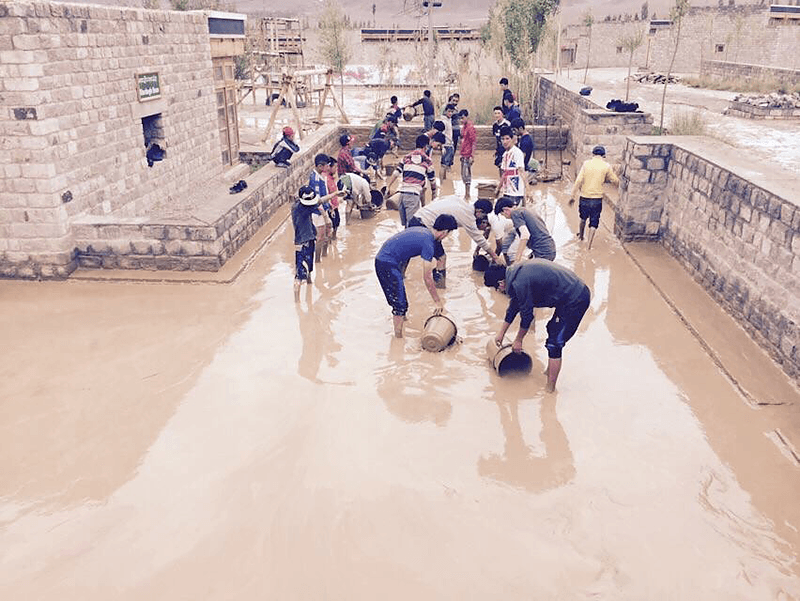
The Himalayan Glaciers, which provide fresh water for nearly half of the world’s population, are threatened by pollution and climate change. Rapid glacial melt and extreme-weather events known as “cloudbursts” or “Himalayan tsunamis” have resulted in flash floods that have devastated downstream communities. Increasingly, Himalayan Glacier Waterkeeper, based in Ladakh, India, has to respond to these climate disasters that are wiping out homes, farms and livestock. In September 2014, flash flooding kept Himalayan Glacier Waterkeeper from joining over 100 members of Waterkeeper Alliance at the People’s Climate March in New York, and this past August, incessant rains and flash floods damaged summer crops and schools.
“Over the last 10-to-12 years, different corners of Ladakh have been affected. In some places there is extreme water-shortage and in other places extreme flooding. It snows when it shouldn’t. It doesn’t rain when it should. Everything in Ladakh’s climate has been turned upside-down. We’ve worked hard to help villagers rebuild their communities from the devastation of the floods. We’ve also organized massive tree planting events as a protection against future climate-caused disasters.” – Padma Tashi, Himalayan Glacier Waterkeeper, Ladakh, India
Mahanadi River Waterkeeper: Rising Sea, Vanishing Villages and Fading Hopes
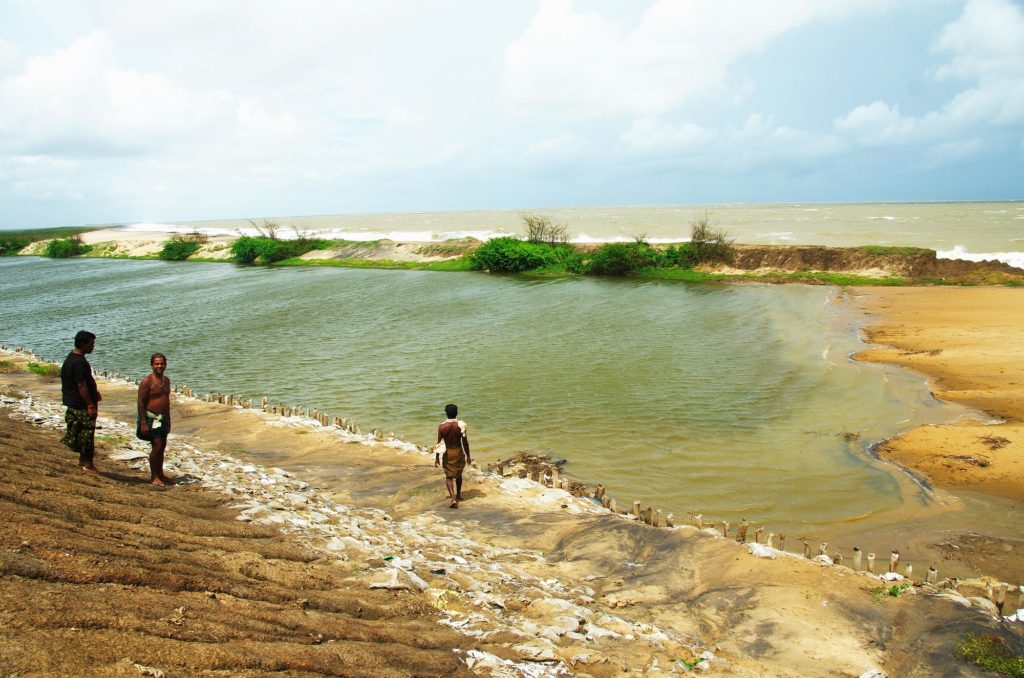
Rising sea levels in the Bay of Bengal are now a horrifying reality, particularly on the Odisha coasts in the Satabhaya region, where the sea is estimated to have penetrated inland 2.5 kilometers in the last 15 years. In one area, where there were once seven villages there is now one because of the invading sea, and the remaining 1,000 residents must live with the fear that it will eventually inundate them and end their struggle to survive.
“The Bay of Bengal is most vulnerable to climate-change impacts, and the people here are increasingly powerless to cope with the disasters. It is high time the global negotiations make a solid commitment to stop climate change and help the poor to develop strategies to deal with the effects. Mahanadi River Waterkeeper has been in constant touch with both the communities who have been displaced and the one that remains, advocating in both the media and directly to the government for proper support and rehabilitation. We have also been working with other local civil society groups to develop local solutions to sea-level rise, such as the regeneration of mangrove forests, and demanding that government, at both the local and state levels, step up and commit to this work.” – Ranjan Panda, Mahanadi River Waterkeeper, Orissa, India
Tuul River Waterkeeper: Impact of Climate Change on Landlocked Mongolia
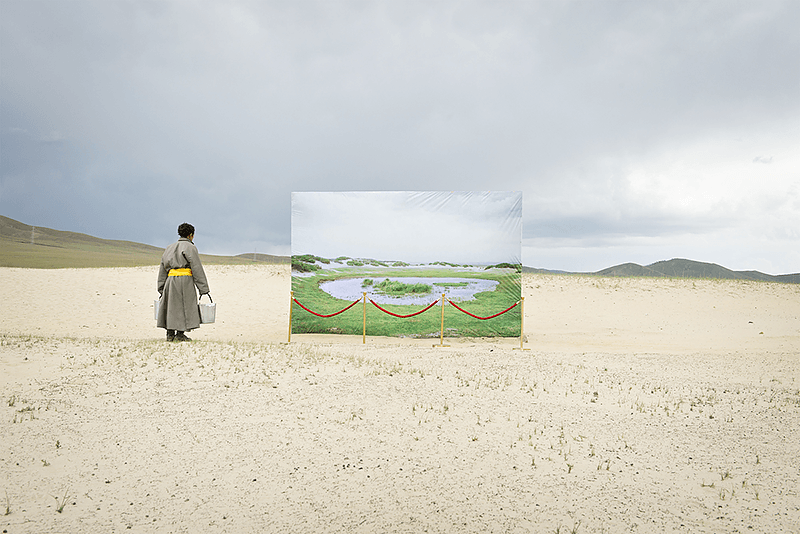
Drought has increased dramatically in Mongolia in recent decades, and has worsened rapidly. The worst droughts were in the consecutive summers of 1999, 2000, 2001 and 2002, which affected 50-to-70% of the territory. During the past few years, about 3,000 water sources, including 680 rivers and 760 lakes, have dried up, and vegetation has greatly diminished. This degradation, in turn, has affected the level of primary production of vegetation/plants, which support livestock as well as human populations.
“Many people from the countryside are migrating to the city to search for better conditions and better opportunities. As more and more people come to the city and more businesses develop, there is an increasing demand for water-resources, which climate change is making scarcer. In the face of this crisis, we are trying to educate people how to use our water in a more sustainable and efficient way.” – Javzansuren Norvanchig, Tuul River Waterkeeper, Ulaanbaatar, Mongolia
Qiantang River Waterkeeper: In Hangzhou Tomorrow is Happening Today

Seven hundred years ago, Marco Polo visited Hangzhou and was amazed by its beauty. He described it as “the City of Heaven.” This beauty is now under the threat of frequent climate disasters and extreme weather. Over the past ten years, Hangzhou’s average temperatures have risen .28 of a degree Celsius, and typhoons and severe rainstorms sweep across the city with much greater frequency, threatening its six million people.
“Since 2002, Qiantang River Waterkeeper has been educating citizens about climate change through various activities, from encouraging the use of energy-saving CFL light bulbs to establishing 12 ‘Water-Future Labs,’ in which selected elementary schools agree to incorporate environmental courses into their curriculums, within the Qiantang River Watershed. “Locally, I was able to convince the state television station to present a forum on reducing coal use in Hangzhou. The show featured meteorologists, environmentalists and officials from the state environmental protection bureau, as well as representatives from the community and local businesses in an open discussion about addressing air pollution in the city. Internationally, I’m carrying the message of what we’re doing in Zhejiang to conferences and forums throughout the world. In response to climate change, tomorrow is today. We need everyone to get involved in this issue.” – Xin Hao, Qiantang River Waterkeeper, Hangzhou, China
Upper Tigris Waterkeeper: Extreme Drought in the Middle East
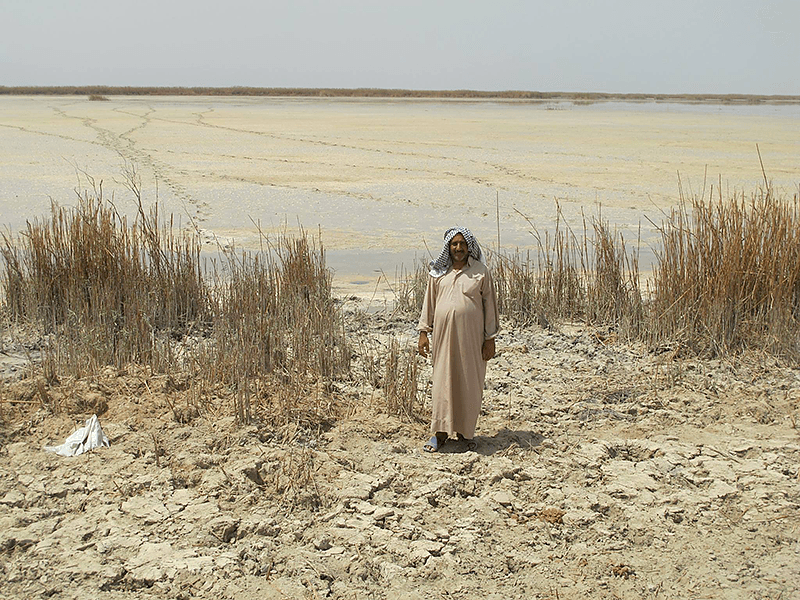
The continuous loss of water in the Tigris and Euphrates river basins is making this dry region more prone to frequent and severe droughts and dust storms. Last summer was the driest that the Mesopotamian Marshlands have seen, and many people were forced to migrate because they simply could not survive in the area. There have been no outright water wars in Iraq yet, though it is widely believed that the Syrian conflict was initiated by a drought in 2007. Serious confrontations over water in an already conflict-ridden region are bound to come.
“We all must take responsibility in our positions for tackling the impacts of climate change. No matter where we live and where we are on this planet, we have to take action now.” – Nabil Musa, Upper Tigris Waterkeeper, Kurdistan, Iraq
AFRICA
Hann Baykeeper: Storms and Sea Claim Traditional Fishing Villages in Senegal
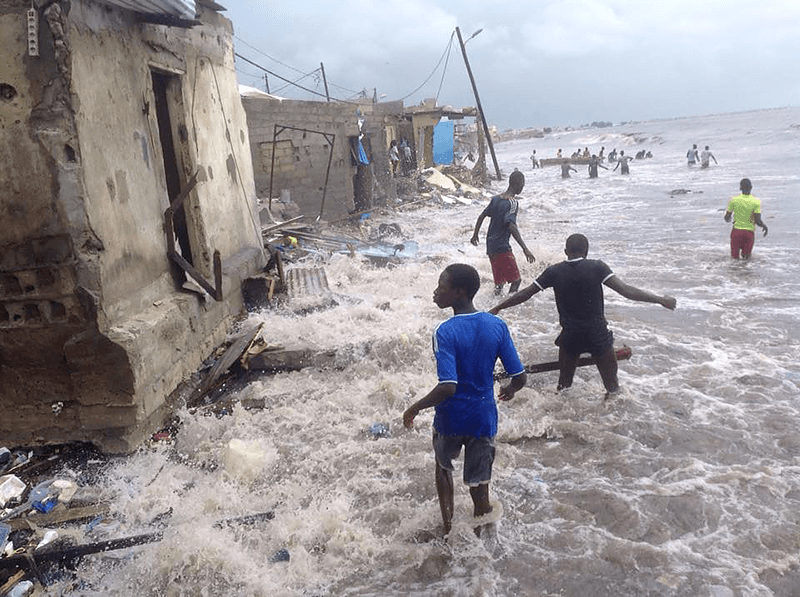
Hann Bay, just south of the capital city of Dakar, was once one of the most beautiful beaches in Senegal, with calm, clear waters, white, sandy beaches, and hundreds of traditional fishing boats. But all of that has been disappearing. Over the last two decades, the sea has advanced 300 meters and hundreds of people have been forced to leave their homes. Last August a powerful hurricane created strong waves and rising sea water that crashed over Hann Bay destroying fishing boats and leaving hundreds of families homeless. While this devastation occurs, Senegal, a country rich in potential for solar-energy projects, has plans to build 11 coal-fired power plants.
“We do not want the government simply to accommodate people in schools and give them food. What we want is a sustainable solution to climate change. That’s why Hann Baykeeper is at the forefront of a national campaign to stop the building of coal-fired power plants. We’ve already succeeded in stopping one proposed plant, and we’re committed to continuing the campaign against fossil-fuel projects that threaten our future.” – Mbacke Seck, Hann Baykeeper, Dakar, Senegal (In November, Mbacke Seck was awarded Senegal’s top environmental prize, the Green Trophy for the Environment, for his leadership nationally in advocating for environmental protection.)
Kenya Lake Victoria Waterkeeper: A Conflict Over Shrinking Water Resources on Africa’s Largest Lake
Lake Victoria, Africa’s largest freshwater lake, is shrinking. Critical papyrus-wetlands habitat and fish stocks are declining. Hydroelectric dams and poor water-resource management contribute to increasing temperatures and climate variability. Lake Victoria fisheries employ over three million people in Kenya, Uganda and Tanzania, and these changing conditions and the conflict over their access to the water are threatening their livelihoods and lives.
“National and local governments of Kenya and the Lake Victoria region must invest in climate-change-adaptation measures now in order to limit fisheries conflicts.” – Leonard Akwany, Kenya Lake Victoria Waterkeeper, Dunga Beach, Kisumu, Kenya
AUSTRALIA
Port Phillip Baykeeper: Coastal Squeeze
Port Phillip Bay, near Melbourne, Australia is in a “coastal squeeze,” its terrestrial coastal-zone caught between urban infrastructure and rising sea levels. The government of the State of Victoria expects that sea level is likely to rise by 800 millimeters by 2100, but climate change also is masking the impacts of development that contribute to coastal erosion. The deepening of the shipping-channel at Port Phillip Heads, for example, has caused stronger tidal currents and storm-surges.
“There are still some who want to argue the toss about climate change being due to natural or human-induced causes, when it’s obviously a bit of both. The point is: what are we going to do about it; and, who’ll have to pay for it?” – Neil Blake, Port Phillip Baykeeper, Port Phillip, Australia
CARIBBEAN
Waterkeepers Bahamas: The Plight of a Small Island-Nation
Bahamian coastlines have been severely eroded by climate-change impacts. This small island-nation has been made vulnerable to storm surges and sea-level rise, as natural barriers like coral reefs and coastal mangrove forests are being destroyed. The Bahamas, a nation of 700 islands and 2,400 cays, or coral reefs, may lose 80% of its land in this century due to climate change. Monitoring and adaptation-planning are critically needed now.
“The subject of climate change in the Bahamas is about more than choosing renewable power or reducing greenhouse emissions; it is about the security of our culture, heritage and continued existence.” – Vanessa Haley-Benjamin, Executive Director, Waterkeepers Bahamas, Nassau, Bahamas
NORTH AMERICA
California Coastkeeper Alliance: Drought Parches the Eighth-Largest Economy in the World
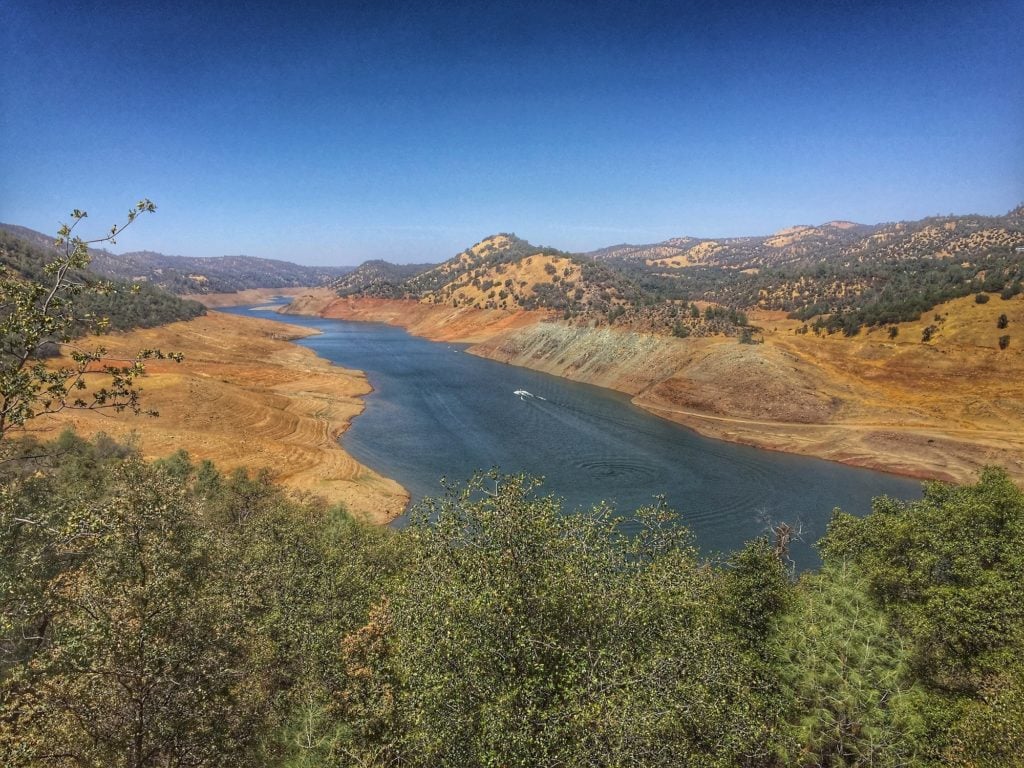
Climate change is significantly altering California’s coast, bays, ocean, rivers and groundwater basins. Sea-level rise, ocean acidification and a searing drought threaten the viability of the waters that sustain the state’s communities, wildlife, economy and quality of life. Climate-change models suggest more frequent and more severe drought and flooding over time.
“Climate change is transforming every facet of California’s waters: the chemistry of our ocean, the character of our coastline, and the frequency and intensity of rain that falls from our sky. We must be innovative, focused and aggressive to transform the way we manage and protect our water.” – Sara Aminzadeh, Executive Director, California Coastkeeper Alliance, San Francisco
Casco Baykeeper: Acidification in Maine – It Shucks to Be a Clam
Our coastal waters are becoming more acidic due to carbon-dioxide and nitrogen pollution. Clams, mussels and other shellfish are having a harder time building and maintaining their shells. Friends of Casco Bay placed hatchery-reared baby clams in a mudflat that had very low pH levels—that is, high acidity. All of the clams showed obvious signs of pitting – formation of microscopic holes that weaken the shells, causing disease and high mortality rates.
“Casco Bay is changing faster than we could have ever anticipated. We are working with local clammers and scientists to find ways to buffer the mudflats by spreading old clam and oyster shells on them because the calcium carbonate in the shells helps raise the pH levels and lower acidity. The long-term solution is that we all need to reduce our use of fossil fuels and fertilizers.” – Cathy L. Ramsdell, Executive Director, Casco Baykeeper, South Portland, Maine
Choctawhatchee Riverkeeper: Suffering from Drought and Flooding
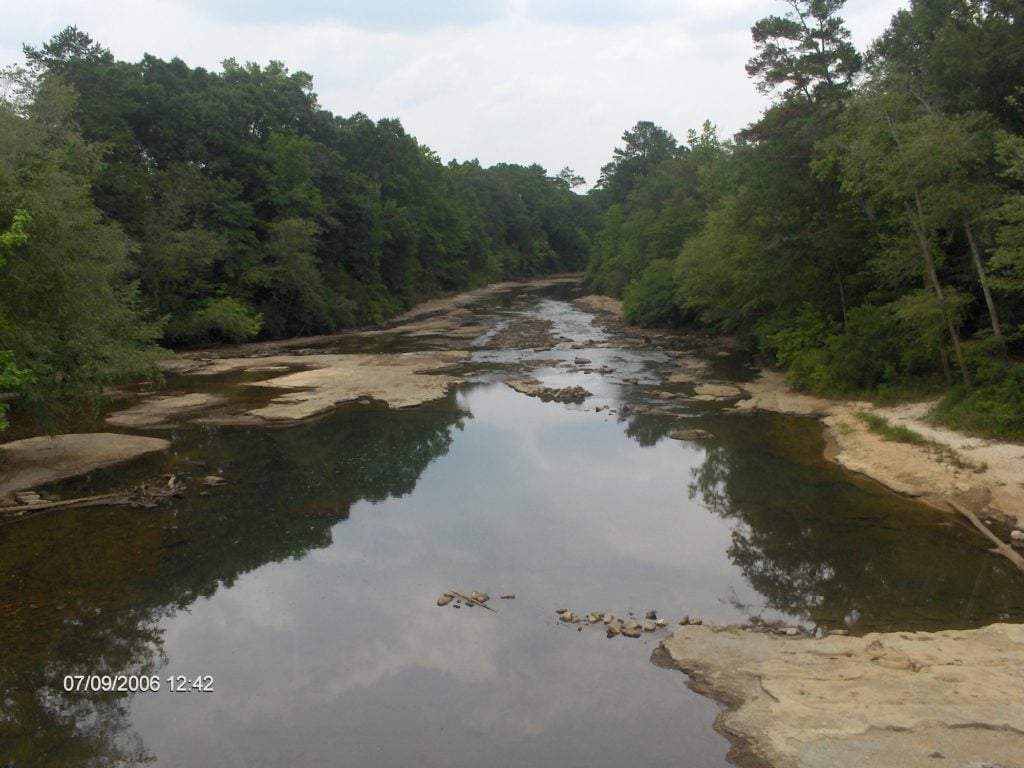
Weather patterns in Alabama have shifted noticeably in recent decades, during which the Choctawhatchee River basin has experienced five extraordinary droughts, more than twice the number of severe droughts experienced between the 1930s and the 1980s. Droughts further stress streams that are already stressed, impacting water quality and endangering species, including numerous mussel species and Gulf sturgeon. The basin is also experiencing increasingly frequent destructive floods not typically associated with tropical-storm systems.
“The increasing frequency and severity of drought will only intensify, as will the frequency of large, destructive storms. We must speak out and demand that our communities and states undertake serious climate-change mitigationand-adaptation efforts.” – Michael Mullen, Choctawhatchee Riverkeeper, Troy, Alabama
Choptank Riverkeeper: A Changing Landscape – Erosion and Transport of Sediment in the Chesapeake
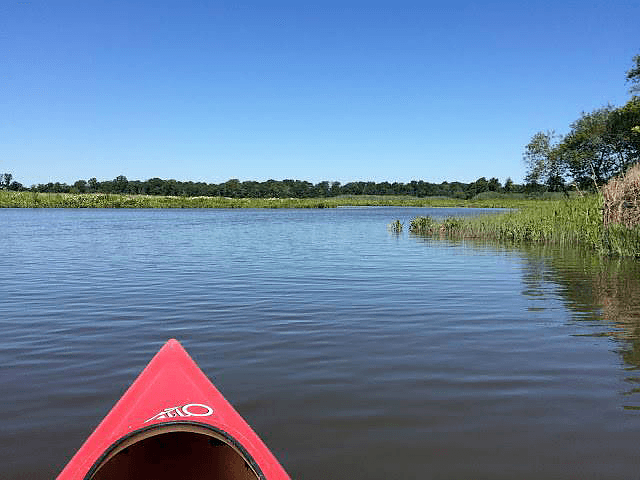
The Chesapeake Bay and its tributaries are being seriously altered by climate change. With rising sea levels and more frequent and intense storms, erosion has increased and flooding has altered the natural transportation of nutrients and sediments into the creeks and rivers that feed the bay. As the low-lying and subsiding land of the bay’s Eastern Shore erodes and less sediment is deposited to replenish it, the natural landscape is changing rapidly.
“Climate change is transforming every aspect of the Choptank River and Chesapeake Bay, from the land that surrounds them to the water that flows through them. As resource managers and stewards of our land and water, we need to adapt our management strategies to innovatively and resourcefully combat the impacts and eliminate the problem.” – Matt Pluta, Choptank Riverkeeper, Easton, Maryland
Grand Riverkeeper: Fracking What’s Left of Oklahoma’s Water
Extreme-weather events in Oklahoma have caused declines in groundwater, the primary drinking-and-irrigation resource in the state. Groundwater is also the fracking industry’s primary ingredient in its extraction technique, which requires one-to-four-million gallons per job. The prime area for shale fracturing is the north central portion of the state, which has seen the worst of the drought this decade. Wastewater from the process is beginning to show up in private rural wells in that area, which indicates that wastewater is in the groundwater, and could at some point contaminate streams. Oklahoma’s drought is predicted to continue indefinitely.
“Even on the wetter side of the state, water is now a premium and being fought over. All the while it is being contaminated by those who want it for oil. This problem is exacerbated by climate change, and will only get worse.” – Earl Hatley, Grand Riverkeeper, Vinta, Oklahoma
Lower Mississippi Riverkeeper: Intense Storms and Disappearing Wetlands in the Delta
The Mississippi River Delta is in crisis. The intensity and frequency of hurricanes has increased in recent decades, a trend which will continue as the ocean surface keeps warming. Last year, the National Oceanic and Atmospheric Administration removed 40 names of places from the maps of Southeast Louisiana because those places no longer exist, except in the memories of coastal residents who have seen the land disappear in their lifetimes. The New Orleans metro area now has only a fraction of the protective wetlands it had 100 years ago.
“Louisiana is on the front lines of climate change. Rising seas will overwhelm our coast and coastal-restoration efforts, and our communities will be increasingly vulnerable to stronger hurricanes. Meanwhile, our politicians are rolling out the welcome mat and subsidizing giant international fossil-fuel corporations who are looking to Louisiana as the last place in the country that will tolerate them.” – Paul Orr, Lower Mississippi Riverkeeper, Baton Rouge, Louisiana
Miami Waterkeeper: Rising Sea Levels and Storms Are Threatening the City’s Infrastructure
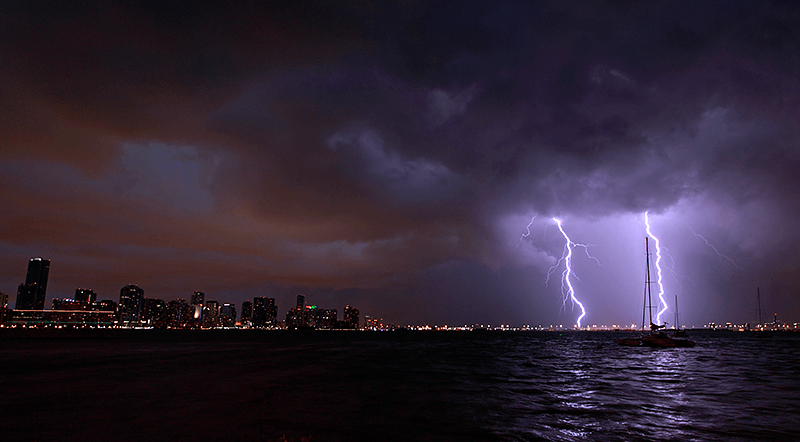
Miami has the world’s 4th-largest population vulnerable to sea-level rise. Climate-change projections strongly suggest that rising sea levels coupled with hurricanes and other extremeweather events will exacerbate inundation and flooding. A new study projects that the value of private property on Florida coasts that will flood at high tide could climb by $69 billion by 2030. Miami, one of the fastest-growing cities in the nation, must find a balance between sustainable growth and adequate environmental protections.
“Miami is ground zero for sea-level-rise impacts and extreme-weather events in the U.S. We must change the current course of developing, destroying and paving over the shorelines and wetlands that serve as natural buffers to climatedriven impacts.” – Rachel Silverstein, Miami Waterkeeper, Miami, Florida
Milwaukee Riverkeeper: The Greatly Threatened Great Lakes
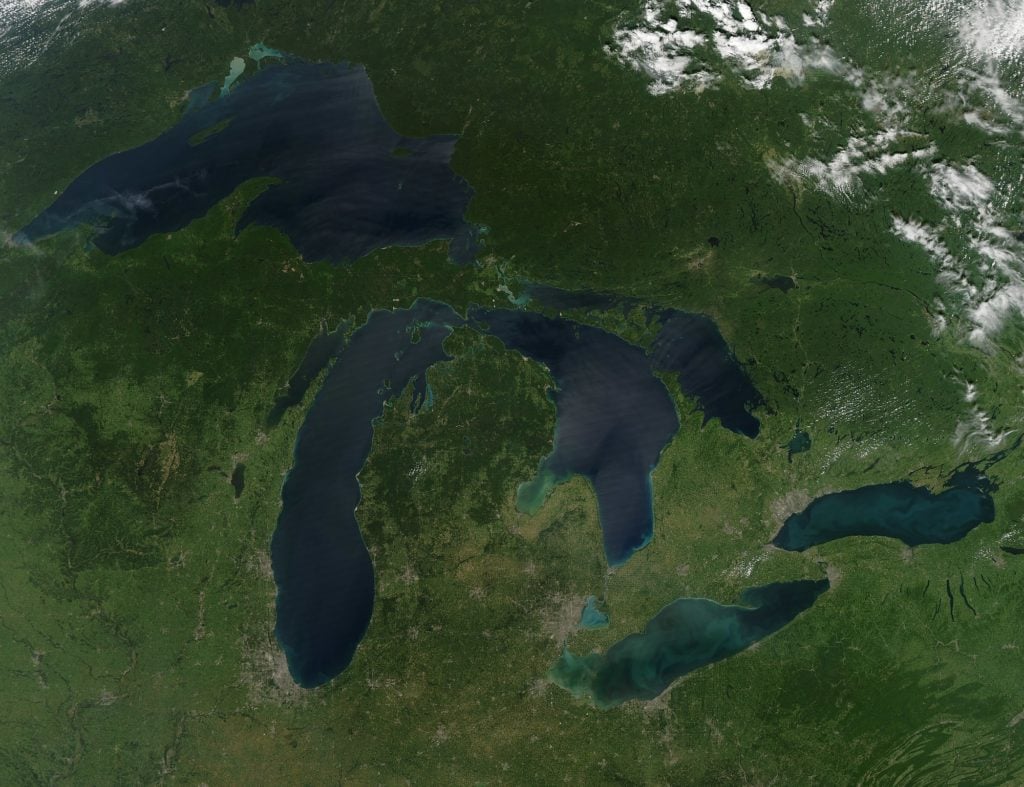
The Great Lakes contain 20 percent of the planet’s fresh surface water, provide drinking water for 40 million Americans and Canadians, and are integral to our economic livelihood and quality of life. While ocean levels are predicted to rise with climate change, due primarily to melting ice, Great Lakes water levels are predicted to decline, because of increased evaporation caused by higher water temperatures in summer and lower ice levels in winter. Lake Michigan and Huron water levels are projected to fall by one-to-two feet by the end of the century, and Lake Erie could drop by more than four feet. Unless actions are taken, climate change is also predicted to cause much more extreme weather, which threatens our existing water infrastructure, and contributes to increased risk of flooding, increased runoff of pollutants, and worsening blooms of nuisance algae like the toxic bloom in Lake Erie that shut down the drinking water supply for greater Toledo, Ohio in 2014.
“North America’s Great Lakes are one of the world’s most astonishing wonders. They might well be called ‘The Very Great Lakes,’ and very great also are the challenges that confront the 11 Waterkeeper organizations dedicated to preserving and protecting them. Great Lakes Waterkeepers are leading the charge for better planning in our communities to make our tributary rivers, lakes and communities more resilient to climate change. We’re advocating strongly for further investment in Great Lakes infrastructure and restoration and for stronger legislation to protect the Great Lakes from emerging threats, such as toxic algae blooms and oil shipments. Waterkeepers are also working hard to protect and restore shorelines, floodplains and wetland habitats to help make our region adaptable to more volatile storms that affect water quality and fish and aquatic life. And we’re organizing opposition to stop the movement of tar sands and Bakken crude oil over our Great Lakes or through our watersheds.” – Cheryl Nenn, Milwaukee Riverkeeper, Milwaukee, Wisconsin.
Cook Inletkeeper: Warming Stream Temperatures Are Stressing Salmon
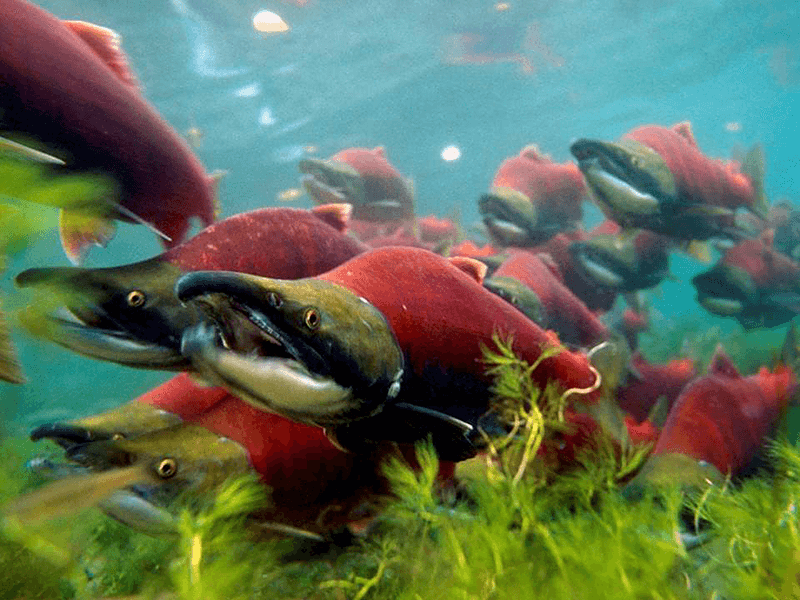
Alaska’s average air temperature has increased 4º F over the past 50 years and winter temperatures have soared 7-to-10º F, which has led mainstream newspapers such as USA Today to label Alaska the “poster state” for climate change in the United States. In Cook Inlet, the effects of climate change have been especially pronounced: a massive spruce-bark-beetle epidemic, several 100-year floods, and alarming warming trends in local salmon streams. Cook Inletkeeper has been monitoring 48 streams for more than a decade to document warming temperatures of important salmon-spawning streams that are critical to Alaska’s culture and economy.
“Salmon define who we are as Alaskans, and climate change poses a real and present threat to our economy, our culture, and our way of life.” – Bob Shavelson, Cook Inletkeeper, Homer, Alaska
Puget Soundkeeper: Oyster Industry Threatened by Ocean Acidification
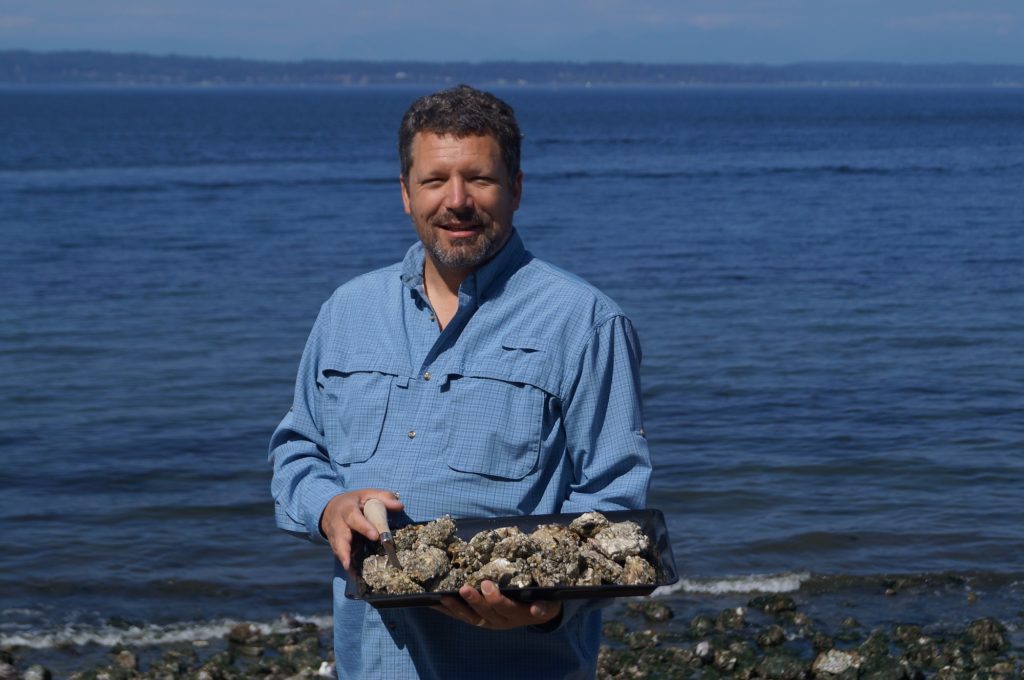
Scientists around the world have been studying ocean acidification in labs for decades, and many have been tracking shellfish hatcheries along Washington’s Pacific coast, where young oysters are now failing to make the transition from a free-swimming state to the shell-bearing organism we all know. This is the result of increasingly caustic waters in which ocean-acidification is more advanced than anywhere else on the planet. In a region where shellfish harvesting is a $270 million industry that employs thousands of people, this is a big cause for concern.
“The Pacific Northwest may indeed be the canary in the coal mine when it comes to climate change and ocean acidification. From record droughts to dissolving plankton, the link between climate and water cannot be ignored. It is high time we get serious about reducing carbon emissions. Puget Soundkeeper is addressing these problems in two ways: We’re working with local advocates, including North Sound Baykeeper, to stop what would be North America’s largest coal-export terminal, which would handle 48 million tons of coal every year and equal the carbon footprint of the entire state of Washington while creating zero local energy. We’re also working to build resiliency in local waterways to protect salmon, shellfish and counter the threats posed by climate change and ocean acidification. By reducing toxic pollution from wastewater and polluted stormwater runoff, local species will have a better chance of surviving mounting climate-caused threats.” – Chris Wilke, Puget Soundkeeper, Seattle, Washington, and member of Waterkeeper Alliance’s Board of Directors
Fraser Riverkeeper: Loss of Winter Snowpack in British Colombia
The loss of winter snowpack in British Columbia is one way that climate change has impacted the Fraser River watershed. The Fraser is driven by snowmelt, so less snow on the mountains in the winter translates to lower flows and warmer water temperatures in summer, which wreak havoc with the river’s annual salmon runs.
“Water temperatures of 20-to-25 degrees Celsius represent the lethal threshold for salmon. This past summer saw temperatures in the main body of the Fraser hovering dangerously close, at around 19.8 degrees. All indicators are pointing to a very poor salmon run as a result of this summer’s extreme weather, and if this trend continues, it could spell disaster for one of British Columbia’s most economically and ecologically important species.” – Joe Daniels, Fraser Riverkeeper, Vancouver, British Colombia
SOUTH AMERICA
Estero Salado Waterkeeper: Guayaquil Looks to Paris for Climate Justice
Over 12% of the population of Guayaquil, Ecuador, on the Pacific coast of South America, lives in poverty, many in shoreline areas most vulnerable to climate impacts. These people, who already suffer from malnourishment, now also face the greatest impacts from the strongest El Niño predicted in more than a decade. Guayaquil must align economic growth with equity, justice and environmental protection. Remediating the Estero Salado Estuary is a matter of survival for the poor who live along its banks. The area urgently needs a real commitment to climatejustice that we hope is one of the results of the agreement in Paris.
“El Niño will strike the entire country of Ecuador and will hit hardest on the poor. Poor people living on the shorelines of the Estero Salado Estuary have been forced to settle where wetlands once served as natural buffers. Guayaquil is not ready for extreme-weather events made worse by climate change. ” – Daniel Ortega, Estero Salado Waterkeeper, Guayaquil, Ecuador
Rio Mapacho Waterkeeper: Watching our Snow and Water Disappear
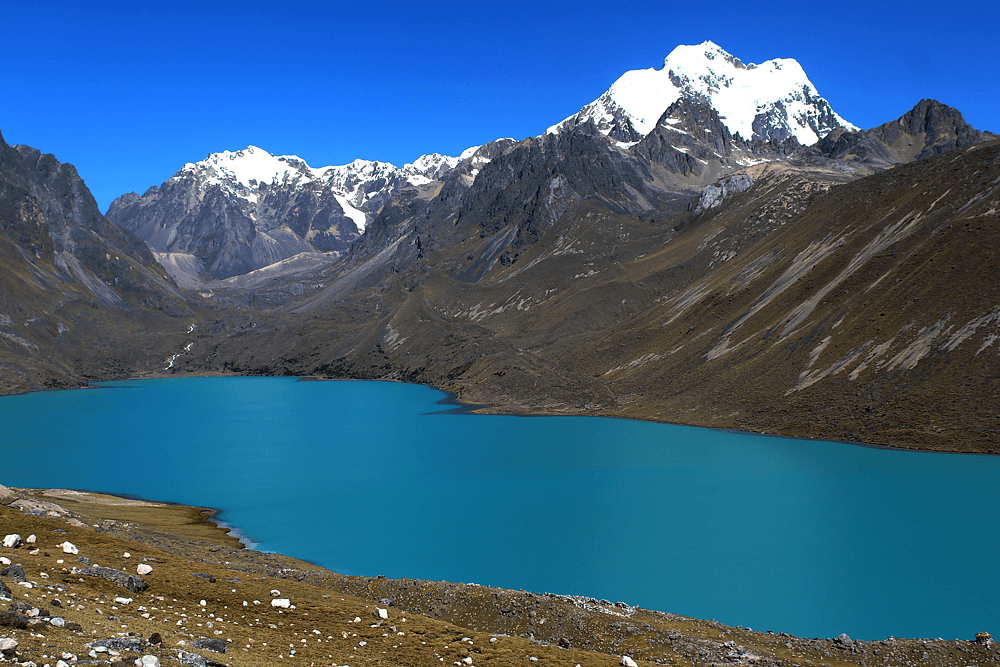
The people of Peru watch their snow-capped mountains thaw more and more every year, as natural water-sources in the mountains that provide them with clean drinking water dry up. Rio Mapacho Waterkeeper is advocating for action to protect these sources during a time of less rain and drier land that forebodes an insecure future in which migration to areas with better water-access will be necessary. Peru’s national strategy is mitigation through decreasing greenhouse-gas emissions, and adaptation to reduce vulnerability to extreme-weather events. The country is responsible for only .4% of global emissions, yet is one of those most affected by climate change. During a 90-minute soccer game, the Amazon rainforest loses the equivalent of 43 soccer fields of forest acreage, and glaciers have decreased 30% in the last 25 years. Some studies estimate that in 40 years Peru will have only 60% of the water it has today because of poor water-usage and glacial melting.
“I remember as a youth, the mountains were covered in snow always, and we would go play in the snow. Now to reach the snow you have to travel much farther. Soon there may be none.” – Ronald Catpo, Rio Mapacho Waterkeeper, Cusco, Peru
EUROPE
London Waterkeeper: Rising Tides
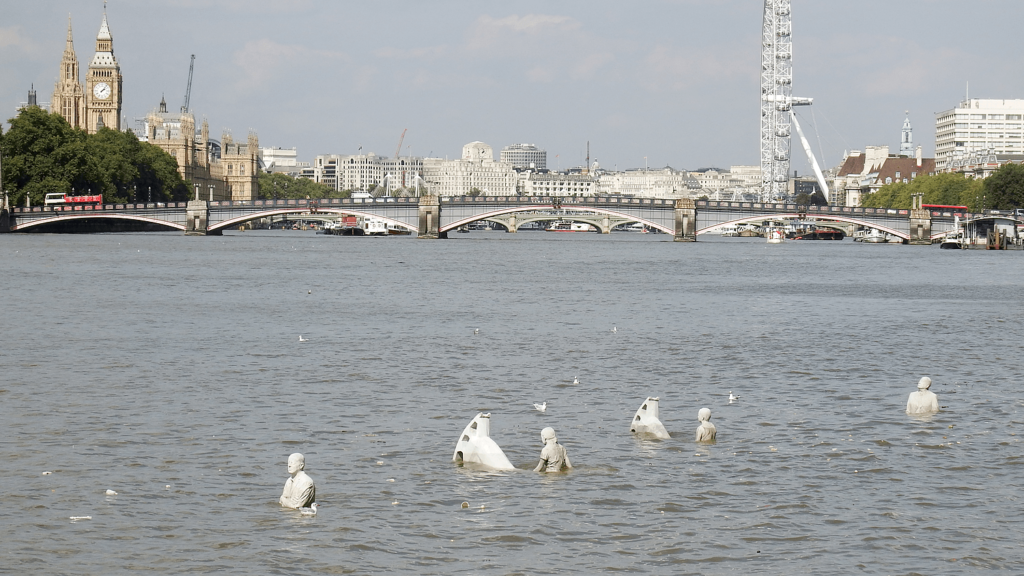
With much of the city of London sitting just above sea level, 1.25 million people are at risk from the rising tides. Moreover, London has spent much of the last generation unwittingly making itself more exposed to climate change and extreme-weather events. Green spaces amounting to 22 times the size of Hyde Park have been paved over, increasing the chances of flooding.
“London must protect and restore its greenspaces to make the city more resilient to climate change and extreme-weather events. London Waterkeeper is making the case for a comprehensive green infrastructure strategy and highlighting both the significant loss of green space over the last 25 years and the need for retro-fit projects in urban areas to offset its paving over. London Waterkeeper’s campaign ‘New York 1, London 0’ makes a direct comparison with the efforts being made in New York City and how far behind London is. The campaign features the solutions that are needed via social media, lectures and lobbying City Hall. ” – Theo Thomas, London Waterkeeper, United Kingdom